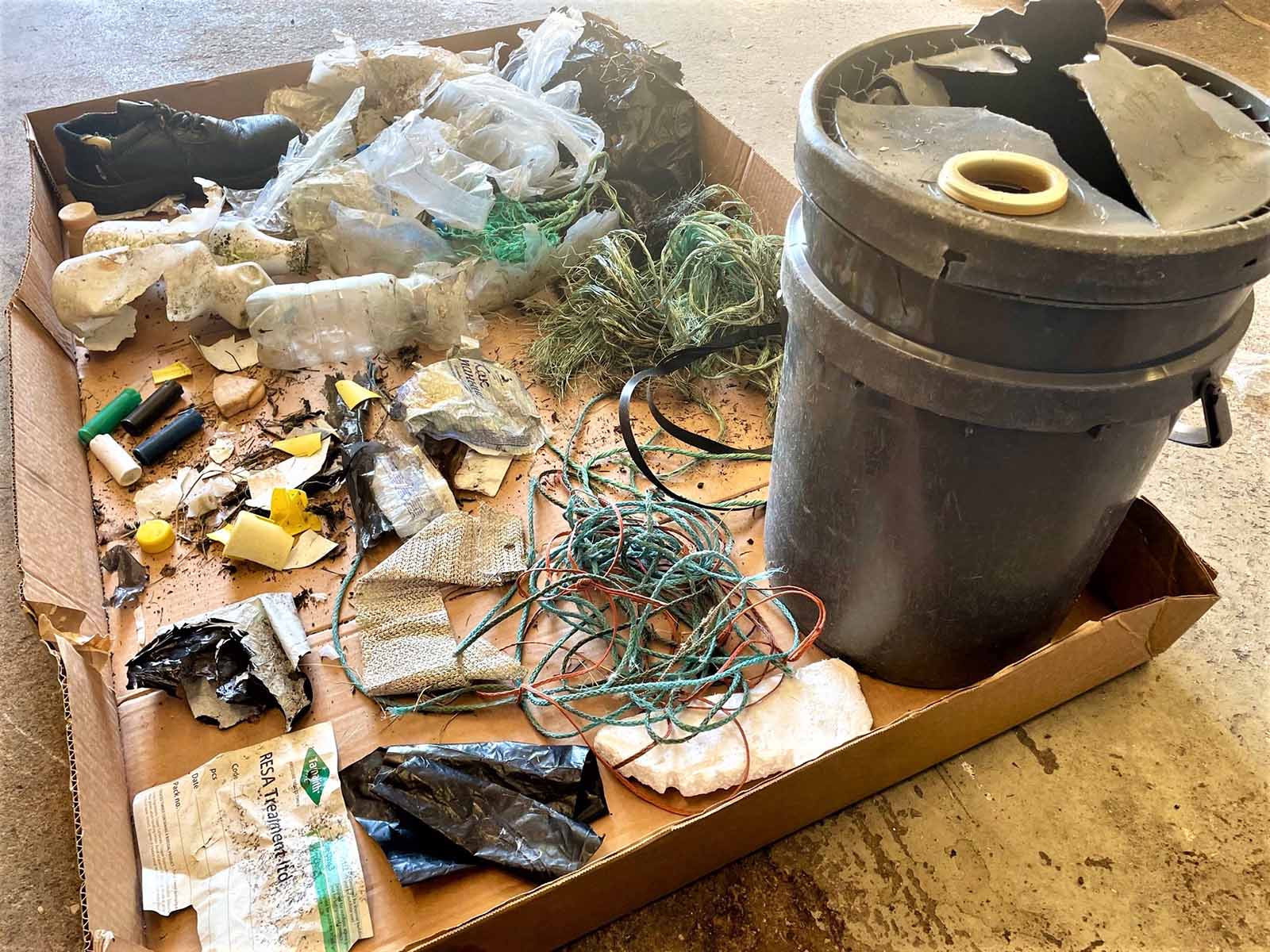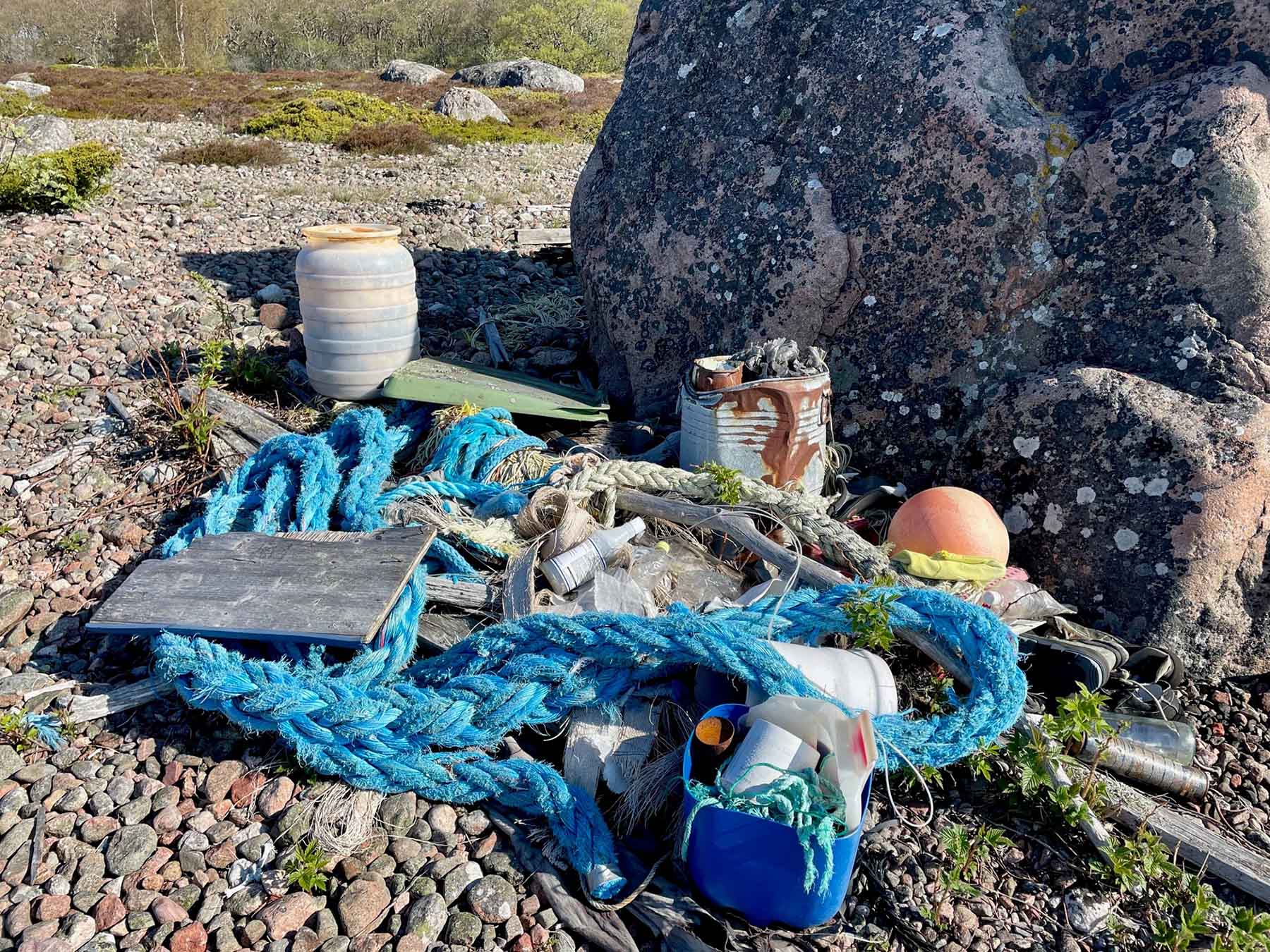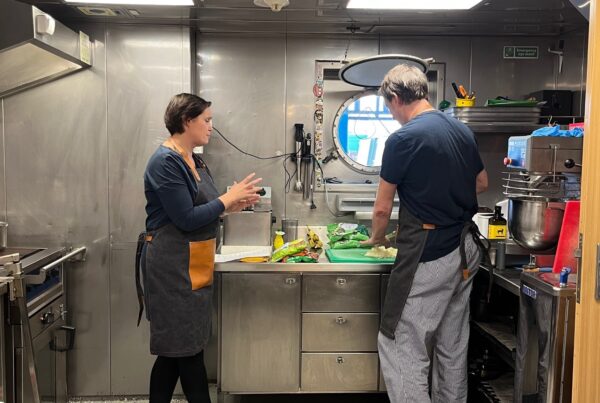When walking along the shorelines of the Archipelago Sea, one cannot ignore the amount of miscellaneous trash carried by seawater. Even on the non-habited islands, you can find the whole spectrum of rubbish types; plastic, rubber, metal and textiles. According to a study by the Finnish Environment Institute, on the beaches that people do not actively use, 44% of all rubbish comes from maritime traffic. Ship-generated trash in the sea mainly consists of pieces and parts of mooring ropes, plastic packaging for chemicals or food, and different kinds of bottles. Surprisingly, along the shipping routes, you can also sometimes find lonely safety shoes. How they end up in the sea remains a mystery.
 During one afternoon on an island excursion, our employee collected quite a bit of trash from the beach. Ship-generated waste clearly stands out.
During one afternoon on an island excursion, our employee collected quite a bit of trash from the beach. Ship-generated waste clearly stands out.
When I started my own seafaring career in 1997, ship waste management was already working reasonably well, even though there the sorting facilities in ports were still at a low level. The problems were primarily caused by the crew’s conservative attitudes. Often the proposal for disposing something was ‘over the side’. Fortunately, with the new generation, the attitudes have changed, and no Finnish shipping company can afford the bad publicity caused by suspicious activity.
Over the years, international legislation for the protection of the sea has also developed in the right direction by the EU, the IMO and HELCOM. A functioning entity requires that port reception facilities are appropriate and adequate and that there are incentives for the delivery of waste to land. In terms of incentives, HELCOM has been very successful, as waste charges are included in port dues, regardless of whether something is left ashore or not. BSAG (Baltic Sea Action Group) also actively shares information to foreign vessels about the special features of the Baltic Sea and the opportunities offered by the waste management systems.
What can be done to ensure that trash will not end up in the sea from our vessels?
In the case of various packed items, it is worth considering whether the packaging waste is transported in the ship or whether it could be left for waste treatment already at the port of departure. Waste bins on ships are in a sheltered place so that the wind does not blow anything to the sea, and all recyclable fractions have their own bins. The training and motivation of seafarers is of paramount/highest importance to make the whole work. The whole chain must be considered: where and when the consumables become waste – or at best a recyclable fraction.
 Jurmo is an island located on the southern edge of the outer archipelago. All ships coming from Utö are passing by, and part of the trash is brought by the marine traffic to the Gulf of Finland.
Jurmo is an island located on the southern edge of the outer archipelago. All ships coming from Utö are passing by, and part of the trash is brought by the marine traffic to the Gulf of Finland.
Dialogue with ports is becoming increasingly important. The wishes of shipping companies will be met when there is more demand for services. The aim is that the good HELCOM practices will become mainstream in other sea areas as well. This would ensure that carefully sorted waste on board ends up in the proper further treatment.
Mia Hytti
Sustainability Specialist, Meriaura Group









